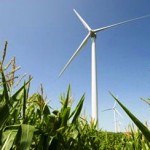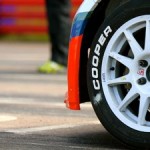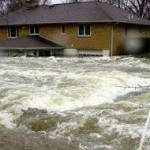
Payerne, Switzerland – An experimental solar-powered plane landed safely today after completing its first 24-hour test flight, proving that the aircraft can collect enough energy from the sun during the day to stay aloft all night.
Pilot André Borschberg eased the Solar Impulse aircraft on to the runway at Payerne airfield, about 31 miles south-west of the Swiss capital, Berne, at 9am local time today. Helpers rushed to stabilize the pioneering plane as it touched down, ensuring that its massive 63-metre wingspan didn’t touch the ground and topple the craft.
The record feat completes seven years of planning and brings the Swiss-led project one step closer to its ultimate aim of circling the globe using only energy from the sun.
“We achieved more than we wanted. Everybody is extremely happy,” Borschberg told reporters after landing.
Milestone
Previous flights included a brief “flea hop” and a longer airborne test earlier this year, but this week’s attempt was described as a “milestone” by the team.
The team says it has now shown the single-seat plane can theoretically stay in the air indefinitely, recharging its depleted batteries using 12,000 solar cells and nothing but the rays of the sun during the day.
But while the team said this proves that emissions-free air travel is possible, it doesn’t see solar technology replacing conventional jet propulsion any time soon. Instead, the project’s over-arching purpose is to test and promote new energy-efficient technologies.
Project co-founder Bertrand Piccard, himself a record-breaking balloonist, said many people had been skeptical that renewable energy could ever be used to take a man into the air and keep him there.
“There is a before and after in terms of what people have to believe and understand about renewable energies,” Piccard said, adding that the flight was proof new technologies can help break society’s dependence on fossil fuels.
Global Flight in 2013
The team will now set its sights on an Atlantic crossing, before attempting a round-the-world flight in 2013, making only five stops along the way.
“It’s absolutely not time to relax,” said Piccard.
Borschberg took off from Payerne airfield into the clear blue sky shortly before 7am yesterday, allowing the plane to soak up plenty of sunshine and fly in gentle loops over the Jura mountains, west of the Swiss Alps.
The custom-built aircraft with its thin fuselage and the wingspan of a Boeing 777 passenger jet managed to climb to 28,000 feet and reached top speeds of over 75 mph.

Borschberg, a 57-year-old former Swiss fighter who was wearing a parachute – just in case – dodged low-level turbulence and thermal winds, endured freezing conditions during the night and ended the test flight with a picture-perfect landing to cheers and whoops from hundreds of supports on the ground.
“The night is quite long, so to see the first rays of dawn and the sun returning in the morning – that was a gift,” Borschberg said after touchdown.
Former NASA Chief Pilot Rogers E. Smith, one of the project’s flight directors, praised Borschberg’s feat of endurance and the overall success of the mission. “We ended up with perhaps 20 percent more energy than we in the most optimistic way projected,” Smith told The AP.
After completing final tests on the plane, Borschberg embraced project co-founder Bertrand Piccard before gingerly unstrapping himself from the bathtub size cockpit where he had spent more than 26 hours sitting.
“When you took off it was another era,” said Piccard, who achieved the first non-stop circumnavigation of the globe in a balloon, the Breitling Orbiter III, in 1999. “You land in a new era where people understand that with renewable energy you can do impossible things.”
Source: Associated Press Release dated July 8, 2010.













